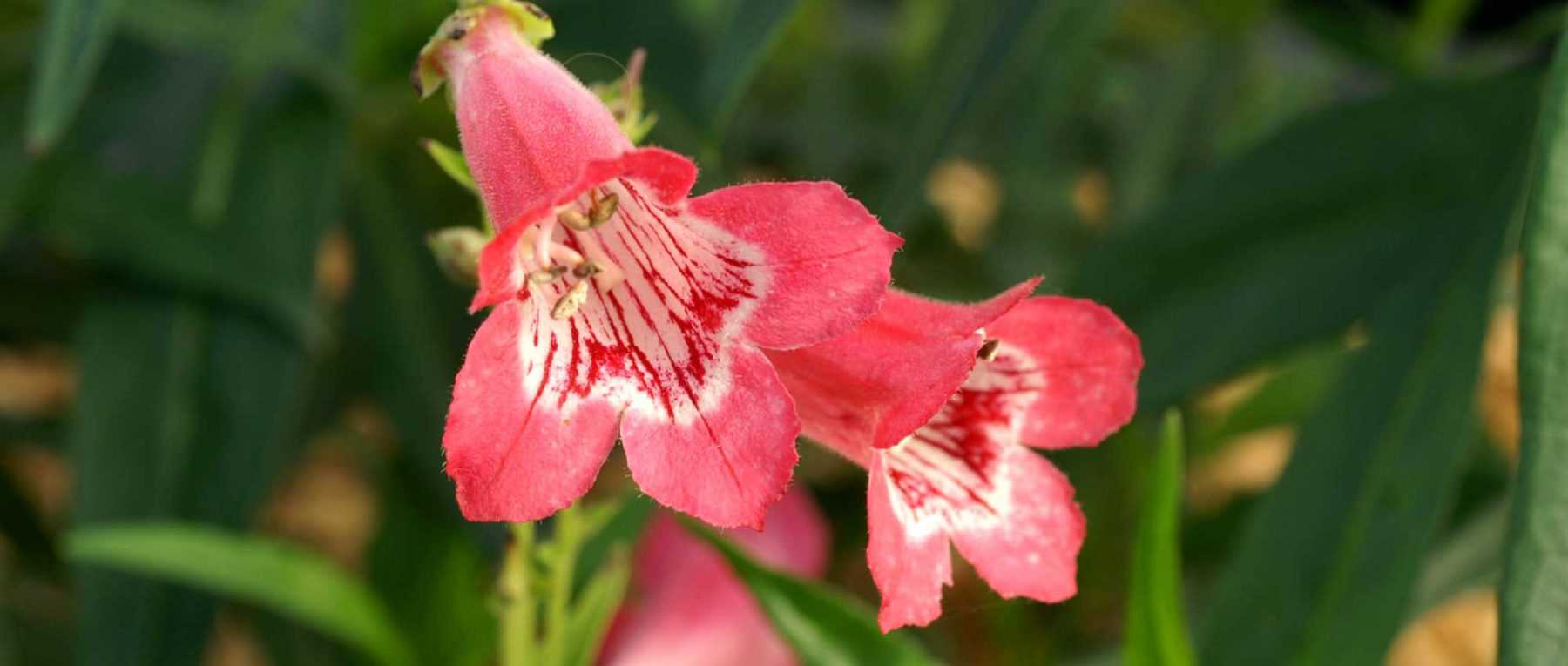
Penstemon: Planting, Pruning and Care
Contents
Penstemons in a nutshell
- Penstemons offer a truly abundant and long-lasting flowering period!
- Their flowers display beautiful, vibrant colours, often in shades of red, pink, blue or purple…
- They possess great charm, with a very natural and delicate appearance
- They thrive in sunny positions with well-drained soil
- They’re reasonably drought-tolerant
Our Expert's Word
Penstemons offer abundant and long-lasting flowering, displaying beautiful, often vibrant hues. Most of them bloom from May until the first frosts. They are cherished for their light and airy blooms, which add height and a natural, countryside charm to flower beds. These are plants that deserve to be better known and more widely grown in gardens. Most varieties produce flowers in shades of purple, pink, or red, though they can also be blue or white. The throat of penstemons is usually a lighter shade, creating stunning contrast and subtle colour variations. Discover Penstemons barbatus (particularly the ‘Coccineus’ variety, with its striking red tone), ‘Garnet’, or hartwegii, with large red and white flowers. You can pick penstemon flowers for bouquets—they hold up quite well in a vase!
Penstemons need to be planted in full sun and well-drained soil, though they will flower more abundantly if the soil remains moist in summer. They are fairly drought-tolerant and cope well with poor soils. Their greatest weakness is excessive winter moisture. Penstemons work well in borders, beds, or rock gardens. As for maintenance, they mainly require pruning in early spring. It’s also best to deadhead spent stems during summer—this will encourage even more generous flowering!
Botany
Botanical data
- Latin name Penstemon sp.
- Family Plantaginaceae
- Common name Penstemon, galane
- Flowering entre mai et octobre
- Height souvent entre 40 et 80 cm, parfois plus
- Exposure plein soleil ou mi-ombre
- Soil type drainant, léger
- Hardiness variable, généralement entre - 5 et - 15 °C
The Penstemons, also known as beardtongues, are perennial plants offering a long and colourful flowering period. In the wild, they are found in North and Central America, mainly in the western United States and Mexico, but also in Canada and Guatemala. They often grow in mountainous areas, but also in lowlands. There are between 250 and 300 species. They have been hybridised in Europe since the early 19th century (particularly in England and Germany), giving rise to numerous varieties.
Penstemons were formerly classified in the Scrophulariaceae family, along with Verbascum (mulleins) and Buddleias; but they have recently been reclassified into the Plantaginaceae family, the plantain family, like snapdragons, foxgloves or speedwells. Their flowering is reminiscent of foxgloves.
The name Penstemon likely comes from the Greek Penta: five, and stemon: stamens, referring to the fifth sterile stamen (the other four being fertile), one of the distinctive features of penstemons.
Penstemon is a fast-growing plant. Most varieties reach between 40 and 80 cm in height. However, Penstemon barbatus can exceed one metre in height, while some are much shorter: Penstemon cardwellii, Penstemon menziesii and Penstemon rupicola do not exceed 20 cm. In the wild, the largest species can reach three metres, and the smallest, only ten centimetres in height!
Although penstemon often has upright, erect stems, there are also small creeping penstemons with a spreading habit, like Penstemon menziesii. Penstemons can also have a bushy form, and the base of their stems is sometimes woody. It is also not uncommon for the stems to take on a rather dark, red or purplish hue. This is often the case with Penstemon digitalis, creating a beautiful contrast with the white flowers. The stems can be slightly hairy, as in Penstemons pallidus or hirsutus.
Penstemons have the advantage of offering a long flowering period! They generally flower from May-June until the first frosts. Pruning penstemons can delay flowering but often makes it more abundant and longer.
When flowering, penstemon produces long erect stems with flowers gathered in terminal panicles or clusters. These come in shades of blue – violet – pink – red, ranging to very dark burgundy red, sometimes purple. They can be single-coloured or bicoloured. They are often enhanced by a white throat, either gradually or with a clear line. The throat may have fine lines creating patterns, as in the variety ‘Souvenir d’Adrien Régnier’. The effects of contrasts and nuances are often magnificent! The flowers can also be entirely white. Much rarer, there are a few penstemons with yellow flowers (like ‘Mersea Yellow’).


The flowering of penstemons! From left to right, the varieties ‘Le Phare’, ‘Hewell Pink Bedder’ and ‘Sour Grapes’ (photo Eric Hunt)
The flowers are tubular or in the form of elongated bell shapes. They can measure between 2 and 7 cm in length and are more or less slender depending on the species. Thus, Penstemon barbatus has slender, elongated flowers, barely open, unlike other varieties such as ‘Gloire des Quatre rues’. The flowers consist of five fused petals, opening into two lips. The upper lip ends in two lobes, and the lower in three lobes. The flowers of Penstemon mensarum have a slightly different shape from other species, with the lobes of the lower lip much more pronounced. Inside the corolla tube, there are five stamens, four fertile and one sterile.
Penstemon flowers resemble those of foxgloves and, when they form small bells, can also resemble campanulas. Large-flowered varieties (like ‘Gloire des quatre rues’) have a very “horticultural” appearance. They are perfect for adding lots of colour to beds and mixed borders, combined with other perennials, but can have an “artificial” side. Those with small flowers, and botanical penstemons in general, have a more natural and spontaneous appearance. They are better suited to cottage-style or naturalistic gardens.
The flowers are rich in nectar and attract pollinators. In the wild, penstemons are pollinated by bees and hummingbirds.
The leaves of penstemons are entire, undivided. They can be oval or lanceolate, but often have an elongated, rather narrow shape. Those of Penstemon schoenholzeri have a beautiful linear shape, fine, delicate… but the finest are those of Penstemon pinifolius, as they resemble pine needles! The leaves measure between 4 and 12 cm in length, sometimes exceptionally reaching 20 cm long. Those of Penstemon barbatus and Penstemon digitalis are quite large, exceeding 10 cm in length. The leaves can be attached to the stem by a petiole or sessile (directly joined to the stem by the blade). They are opposite, meaning arranged opposite each other on the stems, or whorled (at least three leaves inserted at the same level).
The leaves are generally green but can also take on purplish or reddish hues. Thus, the young leaves of Penstemon digitalis ‘Husker’s Red’ have a very dark purplish colour. The Penstemon ‘Dark Towers’ has even darker foliage, almost black. In Penstemon grandiflorus, the leaves are bluish-grey, with a thick, almost succulent texture.
Depending on the variety and the climate in which you grow them, Penstemon leaves can be deciduous, evergreen or semi-evergreen.


The foliage of Penstemon schoenholzeri, and the pubescent leaves and stems of Penstemon hirsutus (photo Salicyna)
In autumn, after flowering, penstemon forms ovoid fruits (capsules) that dry, turn brown, and open when ripe to release numerous small seeds.
Penstemons are perennial plants, but they can be grown as annuals in colder regions. Their hardiness often varies between -5 and -15 °C. It depends on the variety you have chosen, but also on soil drainage. The plants will be more sensitive to cold in waterlogged soil in winter, which is why it is important to grow penstemons in suitable soil or improve drainage when planting. Similarly, adding a layer of mulch will help protect the plants.
Penstemons are not very long-lived plants. Generally, they start to become less vigorous after four years of cultivation. It is then time to renew the clumps. You can do this by taking cuttings.
The main varieties of penstemons
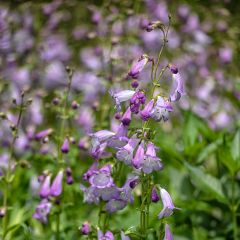
Penstemon Alice Hindley - Beardtongue
- Flowering time July to November
- Height at maturity 75 cm
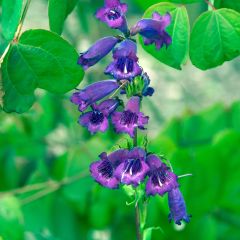
Penstemon Midnight - Beardtongue
- Flowering time August to October
- Height at maturity 60 cm
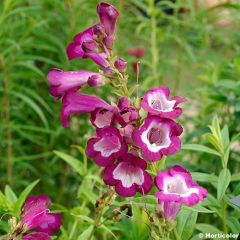
Penstemon hybrida Gloire de Quatre Rue - Beardtongue
- Flowering time July to October
- Height at maturity 60 cm
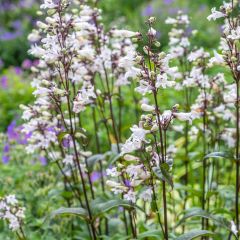
Penstemon digitalis Husker Red - Foxglove beardtongue
- Flowering time July, August
- Height at maturity 65 cm
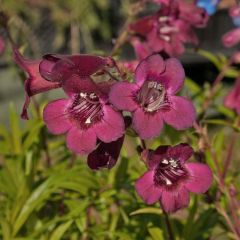
Penstemon Blackbird - Beardtongue
- Flowering time July to November
- Height at maturity 65 cm
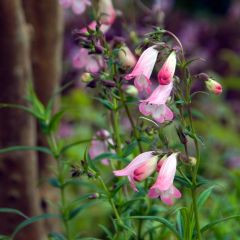
Penstemon Apple Blossom - Beardtongue
- Flowering time August to November
- Height at maturity 70 cm
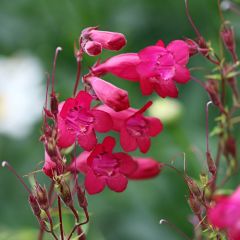
Penstemon campanulatus Garnet - Beardtongue
- Flowering time August, September
- Height at maturity 1 m
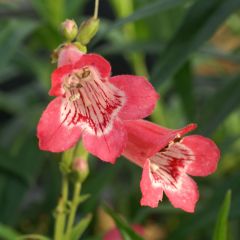
Penstemon heterophyllus Souvenir dAdrien Régnier - Beardtongue
- Flowering time July to November
- Height at maturity 50 cm

Penstemon barbatus Coccineus - Beardtongue
- Flowering time August to October
- Height at maturity 1 m
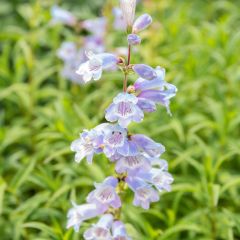
Penstemon Sour Grapes - Beardtongue
- Flowering time August to December
- Height at maturity 50 cm
Discover other Penstemon
Planting
Where to plant?
Plant penstemons preferably in full sun, or possibly in partial shade. Full sun is ideal, especially if you live in northern France. In the south, a slightly shaded spot will suffice, as penstemons dislike scorching sun. Also shelter them from cold winds.
Place your penstemons in well-draining, light soil as they dislike waterlogged conditions in winter. If your soil is clay-based, add pumice or gravel to improve drainage. You can also plant on a mound to elevate the plant and prevent water stagnation. Heavy, water-retentive soil risks rotting the plant’s roots.
Penstemons thrive in fertile soil, rich in humus. We recommend adding compost in spring. Rock garden or shrubby varieties need less organic matter; they tolerate poor, stony soils.
Some varieties (especially smaller, creeping types) suit rockeries, dry gardens or stone walls. They tolerate drought and poor, infertile soils well. You can grow Penstemon cardwellii, Penstemon hirsutus var. pygmaeus or Penstemon pinifolius this way.
In suitable conditions, penstemons become hardier and need less care. Their main dislikes are cold and excess moisture. Planting in well-drained soil sheltered from wind improves hardiness.
Penstemons dislike root competition from other plants. Avoid planting near shrubs, trees or vigorous plants.
They also grow well in containers – ideal for less hardy varieties you can overwinter under cover.
When to plant?
The best time to plant penstemons is spring, April-May, though autumn planting works in mild climates.
How to plant?
Plant penstemons in groups of at least three to five for best effect. Space 30-40cm apart (less for compact varieties).
- Soak the rootball in water for 10-15 minutes.
- Meanwhile, dig a hole two to three times the rootball’s size.
- Loosen the planting hole’s base and add drainage material. Mix well-rotted compost into the soil.
- Position the rootball in the hole and backfill with soil.
- Water thoroughly.
- Apply mulch around the plants.
Water regularly (weekly) during the first year, then reduce frequency.
Also watch our video guide – How to plant perennials?
Penstemons adapt well to container growing. Add drainage layer, then compost, plant and water. Learn more in our guide Growing Penstemons in pots.
Read also
Foxgloves: Sowing, Planting and CarePenstemon Care
Penstemons generally require very little maintenance. Water occasionally in the months following planting, while the plant establishes itself. If grown in pots, you’ll need to water a bit more frequently as the compost dries out quickly. Although these plants are quite drought-tolerant, it’s best to keep the soil moist in summer to ensure they continue flowering abundantly. Be careful not to overwater though, as this may cause root rot. To help the soil retain moisture longer, apply a mulch which will also suppress weeds. In any case, we recommend applying a thick mulch layer in late autumn to protect the plant from cold.
Sometimes the stems may bend under the weight of the flowers. To prevent this, you can prune them to maintain a more compact, bushy shape, provide support with stakes, or plant them among more rigid plants or against walls/structures that will help hold them up.
In spring, it’s advisable to add some well-rotted compost around the base of the plant, lightly working it into the soil surface. You can also apply organic fertiliser (such as crushed horn, dried blood or guano).
Penstemons are relatively short-lived plants; they typically become less vigorous after about four years in the garden. It’s best to replace them every three to four years. Their short lifespan is offset by how easily they propagate from cuttings! You can also divide clumps in spring.
We recommend pruning penstemons to maintain vigorous, bushy and floriferous plants. This encourages branching and new growth while extending the plant’s lifespan. Don’t prune in autumn as the old stems and leaves protect the crown from cold – wait until early spring when new shoots begin to appear. For the most vigorous varieties, you can cut back hard (to 5-10cm from the base), while others can be trimmed to 20-30cm. The plant will soon produce new growth. In midsummer, deadhead spent flower stems to encourage more blooms.
Generally, penstemons are not very disease-prone. They may occasionally suffer from powdery mildew, a fungal disease appearing as white felting on leaves. We recommend treating with sulphur spray. Garlic infusion or horsetail manure can also be used. Watch out for slugs and snails which nibble young shoots – protect plants by scattering ash or wood chips around them. Penstemons may also be attacked by nematodes.
Propagation: Cuttings, Division and Sowing
Since penstemons are not always very hardy, regularly propagating them allows you to preserve your varieties and replant them if they don’t survive the winter. Taking cuttings is the best technique for this. You can also divide them or sow seeds, and some semi-woody species can be layered.
Taking Cuttings
Taking cuttings is the simplest and most reliable method for propagating penstemons. Do this in summer, around August.
- Take a section about ten centimetres long from a non-flowering stem. Make a clean cut just below a node (the point where leaves join the stem).
- Remove the leaves from the lower part of the stem, leaving only two or three leaves at the top.
- Fill a pot with a mix of compost and sand, optionally with vermiculite, then water to moisten it.
- Dip the base of the stem in rooting hormone.
- Make a hole in the substrate, for example using a pencil or a small wooden stick.
- Place the cutting in the hole.
- Firm the substrate around it to ensure good contact between the cutting and the growing medium.
- Place the pot in a sheltered, bright spot without direct sunlight.
The substrate must not dry out until the cutting has developed roots. You can plant the young plants in the garden the following spring.
Division
Over the years, penstemons, especially creeping varieties, sometimes become less bushy and tend to weaken, flowering less and less. It is then best to divide them to rejuvenate the clumps. Do this in spring, around April. Some species divide more easily than others. If your plant is not suitable, it’s better to propagate it by cuttings.
Identify a large clump and check whether all the roots come from the same spot or if the plant separates into several rosettes: in this case, division will be fairly easy. Dig up the clump, then separate it into several sections, each with at least one rosette of leaves and roots. Replant the sections immediately in another location or in pots. Water generously.
Continue to water regularly.
Sowing
Sowing Penstemon seeds is more delicate and time-consuming than taking cuttings. For some species, the seeds may take a long time—several months or even years—to germinate. Reserve sowing for botanical species. The best time is between late winter and early spring, around March.
Generally, Penstemon seeds germinate better after being stored dry for at least six months. Additionally, some species require seed stratification before sowing. To do this, place them in damp sand and leave them in the refrigerator (or outdoors in winter) for a few weeks.
- Without stratification, you can fill a pot with compost mixed with sand, sow the seeds, and cover them. Use sieved compost.
- If you have stratified them, remove them from the refrigerator as soon as they start to germinate, then replant them in pots filled with substrate.
- Water.
- Place the pots under a cold frame in a bright spot.
You can plant them in the garden in early summer, around June.
Combining Penstemons in the Garden
Penstemons and their vibrant hues are perfect for bringing vitality to the garden. And they pair beautifully with other summer-flowering perennials… Take the opportunity to create colourful beds or mixed borders! You can plant them alongside yarrows, hardy geraniums… and with the colourful blooms of asters and Echinacea purpurea, for a garden in bloom until autumn! You can also pair penstemons with agastache, which flowers for a long time and has similar growing conditions. And for a delicate, romantic atmosphere, don’t hesitate to plant penstemons alongside roses; their flowering colours will harmonise effortlessly.
Penstemons pair wonderfully with ornamental grasses, such as Pennisetums or Stipa tenuifolia. These are also plants that enjoy full sun and tolerate drought well. Use them together to create a wild, meadow-style garden, giving your beds the look of a flowering prairie! Create an artful disorder where stems intertwine—a spontaneous, lively, free-flowing border! Add a few colourful blooms among the penstemons and grasses, such as Gaura lindheimeri, field scabious (Knautia arvensis), or burnets—particularly Sanguisorba minor, which tolerates drought fairly well. Also enjoy the light, abundant blooms of cosmos!
Penstemons fit effortlessly into dry gardens or gravel gardens. Here too, incorporate clumps of ornamental grasses, along with tansies, artemisias, Verbena bonariensis, Carpathian bellflowers (Campanula carpatica), or Centranthus ruber. Smaller penstemons, especially those with a spreading habit, will thrive in rockeries or on walls, paired with sedums, houseleeks, Campanula muralis, or Phlox paniculata.
→ Discover more ideas for pairing penstemons in our advice guide!
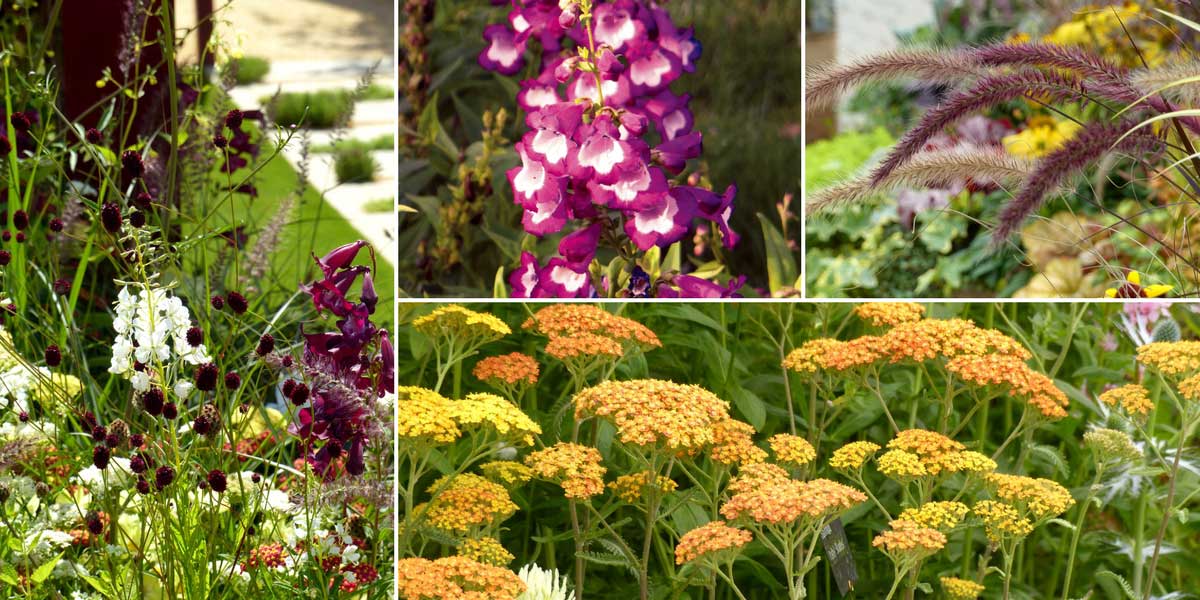

Incorporate penstemons into a border with other light, colourful blooms! Pairing with Sanguisorba ‘Red Tip’, Pennisetum, and Epilobium album / Penstemon ‘Gloire des Quatre Rues’ / Pennisetum setaceum ‘Rubrum’ / Achillea ‘Terracotta’
Useful resources
- Discover our range of penstemons!
- Find out how to choose a Penstemon
- Our video tips – How to plant perennials?
- Video – Francis Peeters talks about Penstemon ‘Blackbird’
- A blog about penstemons
- In English, the website of the American Penstemon Society, with plenty of cultivation information
- Discover our 7 ideas for creating beautiful summer planters
- Our advice sheets: 5 purple or mauve-flowered penstemons, 5 red-flowered penstemons
Frequently asked questions
-
My penstemon is flowering less and less, it seems to be weakening... What should I do?
It is advisable to prune penstemons in late winter, as this encourages new shoots and revitalises the plant. Pruning may delay flowering but results in a more abundant display. Similarly, in summer, cut back spent flower stems to encourage the plant to produce new blooms. You can also divide them. Penstemons are short-lived perennials: we recommend renewing the plants approximately every four years.
-
I live in an area with a harsh climate... What can I do to help my penstemon survive the winter?
Start by choosing the hardiest varieties. Apply a good layer of mulch in autumn to protect it from the cold. Position it in a sheltered spot, away from wind, on perfectly drained ground. It's crucial that the soil doesn't become waterlogged in winter. And take cuttings to preserve the variety in case you lose it! You can also grow your penstemon in a container and bring it indoors for winter in a frost-free shelter.
- Subscribe!
- Contents



































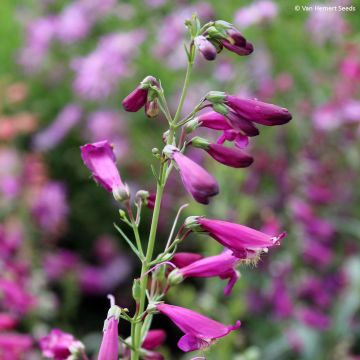


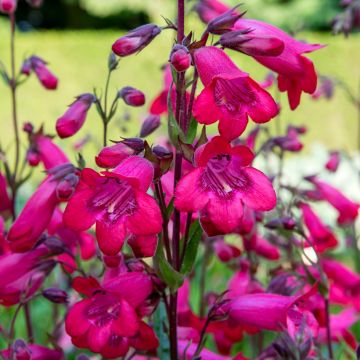

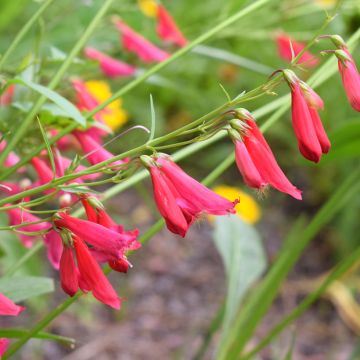
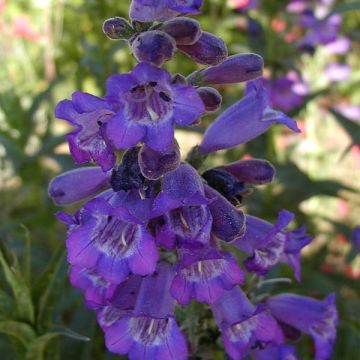
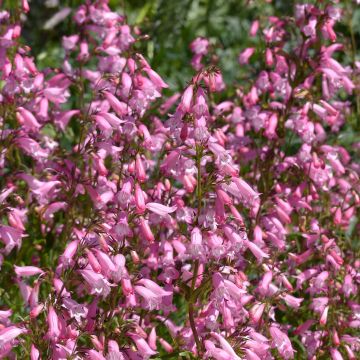
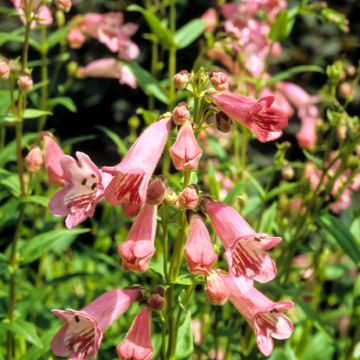
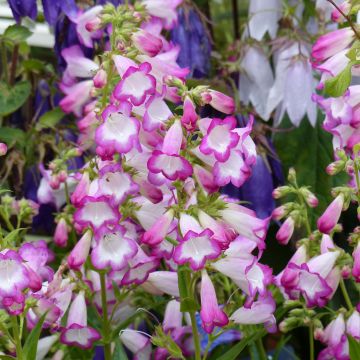

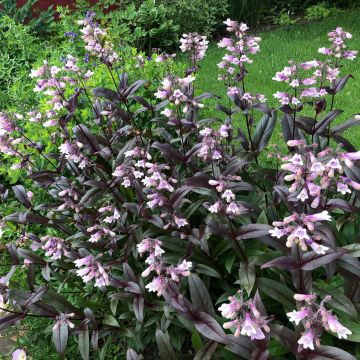
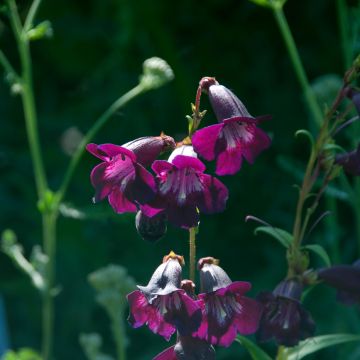


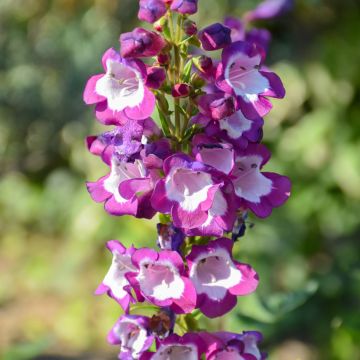
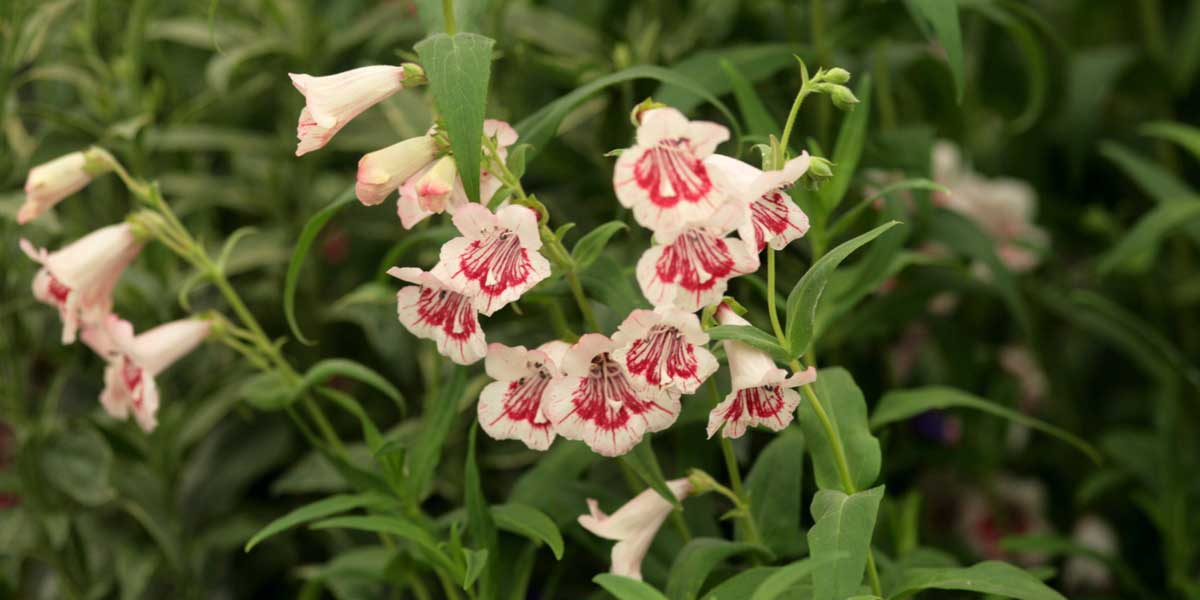
Comments